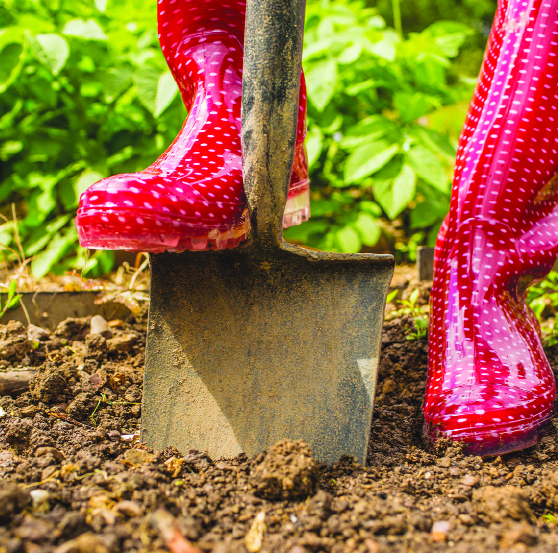
BY GERRI GIBNEY
Can you believe it? My “In the Garden” column is celebrating its seventh year anniversary and I’ve enjoyed every minute of it, and hopefully, dear reader, you have, too. Send me your comments and questions; I’d loved to hear from you. Now, let’s get out into the garden since it is already March and there’s much to do.
If you have not finished your clean up of perennials, you should be doing this as quickly as possible. Get rid of the dead and dried up stalks and leaves, since the new growth is most likely peeking through the soil already. I am really guilty of leaving some of my garden unkempt during the winter and I plan to get this done pronto. Since we’ve had quite a bit of rain, wait until the ground dries up a bit – you don’t want to go working in your garden in the mud. This is not just because it is messy; the main reason is that you will spread disease about if you do so. Sounds pretty scary, doesn’t it? While you are out there, rake up the debris and leaves left over from the fall. For some reason, no matter how well you do your fall clean up, there are always leaves and more “stuff” to get rid of in the spring. Unfortunately, I did not do my last leaf clean up in my back garden, and it is a total mess. This kind of clean up I’m not looking forward to.
Since we’re less than a month away from the official first day of spring, you can get a jump start on it if you have early spring flowering shrubs in your yard. Clip off branches about 2-3 feet long, and bring them into the house. I’m talking about forsythia, pussy willow, cherry, and flowering quince or any other tree or shrub which flowers. Smash the cut ends of the branches with a hammer to help them absorb water, which should be on the cool side, and display your arrangement in a bright room. Nothing says spring like the ubiquitous yellow forsythia when it’s sitting on your coffee table in a large vase.
Early spring is also the time to do some work on your lawn. Just so you know I am no lawn expert – far from it. But, the middle of March is the best time to do seeding, and so I thought I should pass some information along to you if your lawn needs some TLC. However, if your lawn needs major renovation, wait until September. Now is the time for seeding thin areas, or filling in bare spots. In order for the seed to germinate, you must make sure the seed is in contact with the soil. In thin areas, broadcast or throw the seed in the area, and cover the seeds with no more than a quarter of an inch of soil, lightly water the seeds, and keep moist until the grass germinates. If you have bare patches, first rake the area to break up the soil, seed, and then cover lightly with soil and water in the seed.
Now, too, is the time for fertilizing your lawn. When you go to the store, look on the bag of fertilizer and the first number to appear is nitrogen. Nitrogen is the substance that makes your lawn green. The next two substances that are listed on the bag are phosphorus and potassium, both of which are critical to root growth. A good overall spring fertilizer is 10-6-4.
While you are fertilizing your grass, if the ground thaws, late March is a great time to fertilize your shrubs with a 5-10-5 fertilizer. It gives them a kick-start for the spring and summer season. A 5-10-5 is an all-purpose fertilizer and whether you use a granular or liquid type, read and follow the label directions to see how much is required.
Many gardeners sprinkle lime on their grass every year automatically. Our soil in New Jersey tends to be acidic, so lime is added to bring the pH up to its proper level. What’s the proper pH level you are asking, and what is pH? The pH is a measurement of the relative acidity (low pH) or alkalinity (high pH) of soil or water based on a scale of 1 to 14, 7 being neutral. Individual plants require soil to be within a certain range so that nutrients can dissolve in moisture and then are available to them. Lawns should be the neutral number of seven. Of course, most of us don’t know the pH of our lawns, so it is important to test your very own pH and to do that you can buy a test kit from the nursery or get one from the Cooperative Extension of Bergen County, Rutgers New Jersey Agricultural Experiment. Their phone number is (201) 336-6780. If you purchase a test kit from the county, your soil sample is sent to Rutgers and they will return to you information on the nutritional level of your soil and instructions for making the necessary adjustments.
Until we meet again, keep your feet dry and your hands dirty.
Gerri is the president of the Garden Club of Harrington Park. She’s a life-long, passionate gardener who loves everything “garden.” She is an antique dealer, writer, and has a design service specializing in garden containers. Write to her at themerchantmouse@aol.com for comments and questions or visit themerchantmouse.com.
